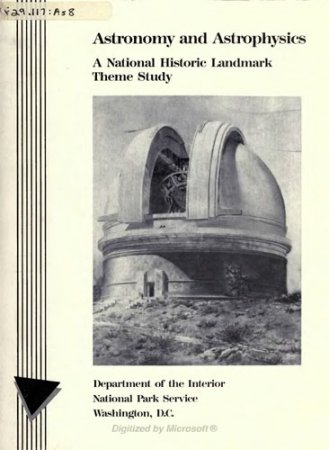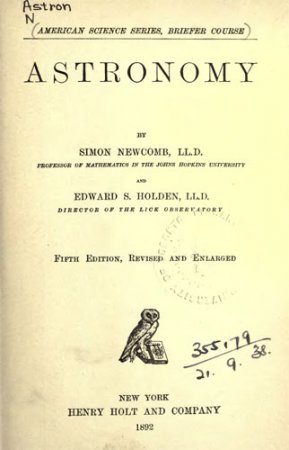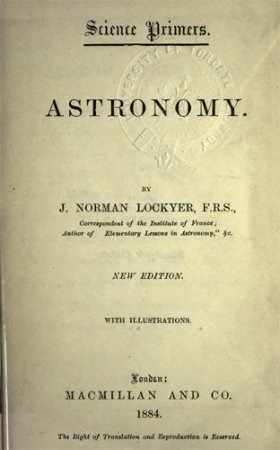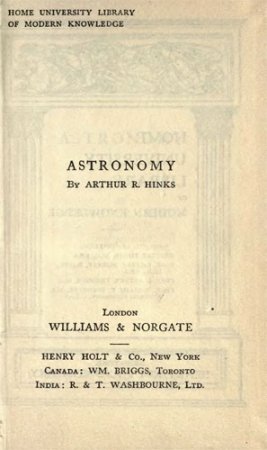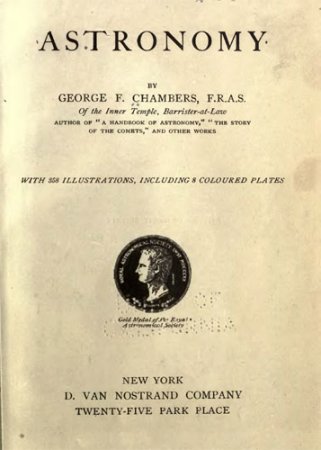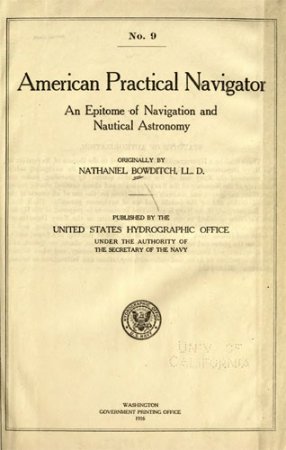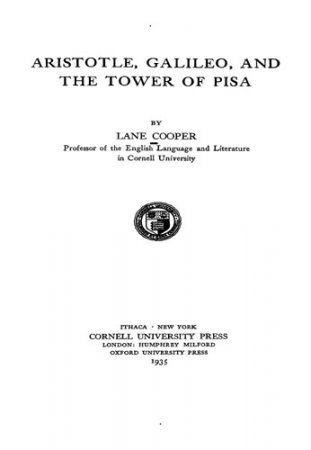НавигацияАрхив новостейСтатистика |
AstronomyPREFACE Notwithstanding the large number of scientific works which have been published within the last few years, it is very generally acknowledged by those who are practically engaged in Education, whether as Teachers or as Examiners, that there is still a want of Books adapted for school purposes upon several important branches of Science. The Series of which this is the first volume will aim at supplying this deficiency. The works comprised in the Series will all be composed with special reference to their use in school-teaching ; but, at the same time, particular attention will be given to making the information contained in them trustworthy and accurate, and to presenting it in such a way that it may serve as a basis for more advanced study… Astronomy and Astrophysics National Historic Landmark Theme StudyThe Astronomy and Astrophysics National Historic Landmark Theme Study was prepared by the National Park Service for the National Park System Advisory Board as part of the National Historic Landmarks Program. The purpose of the study is to identify the sites, structures, buildings and objects significant in the history of the sciences of astronomy and astrophysics in the United States. Those properties nominated for National Historic Landmark designation in this study will be evaluated by the National Park System Advisory Board, a committee of scholars and other citizens. The Board will then recommend to the Secretary of the Interior the properties, which in its opinion, should be designated as National Historic Landmarks. The decision to designate or not designate a recommended property rests with the Secretary. A complete explanation of the purpose of the National Historic Landmarks Program and regulations of the program can be found in the appendix to this study. AstronomyPREFACE The late Father Gratry, Member of the French Academy, once said : " It is astonishing how ignorant the great bulk of the public are in regard to astronomy. I have known men of education maintain that the ancient system of astronomy (which they considered to be the most philosophical, and branded me as an empiric for not agreeing with them) was the true one ; that the sun revolved round the earth, not the earth round the sun… AstronomyPREFACE The present treatise is a condensed edition of the Astronomy of the American Science Series. The book has riot been shortened by leaving out anything that was essential, but by omitting some of the details of practical astronomy, thus giving to the descriptive portions a greater relative extension. The most marked feature of this condensation is, perhaps, the omission of most of the mathematical formulae of the larger treatise. The present work requires for i f s understanding only a fair acquaintance with the principles of algebra and geometry and a slight knowledge of elementary physics. The space which has been gained by these omissions has been utilized in giving a fuller discussion of the more elementary parts of the subject, and in treating the fundamental principles from various points of view. AstronomyPREFACE TO THE NEW EDITION In writing this little book I endeavoured first, to help the reader, by means of simple experiments, to form true ideas of the motions of the heavenly bodies ; and then to give a sketch of the Earth's place in Nature, and of the use made of the heavenly bodies for Geographical purposes. Astronomy: A Handy Manual For Students And OthersPREFACE In this little book I have attempted to give an account of the methods employed by astronomers and the reasons for some of the propositions they advance. Astronomical investigations frequently seem complicated owing to the amount of subsidiary detail, but the principles underlying them are simple and usually admit of a clear statement which can be followed by a general reader. In the introduction to his lectures delivered at Ipswich in 1848 Sir George Airy draws attention to an attitude towards Astronomy which is still prevalent. Such questions as the determination of the distance of the Sun or Moon are considered as beyond ordinary comprehension ; the instruments with which astronomical measurements are made are supposed to be based on obscure and difficult principles ; therefore the best a layman can do is to accept statements on the personal credit of the astronomer making them. He points out that this is an exaggerated view. The principles involved in measuring the distance of the Moon are no more abstruse than those employed to find the distance of a tree on the other side of a river. Astronomical instruments are as simple in principle and far less complicated in detail than a lathe or a steam-engine. It is quite true that in both instruments and methods many subsidiary details must be attended to when great accuracy is required in order that disturbing causes may be allowed for or eliminated. But an explanation of the essential principles may be given which can be readily understood with ordinary care and attention… AstronomyPREFACE This volume is not a formal treatise on Astronomy, nor is it a mere educational text-book ; but the idea which underlies it may be realised from the following considerations. An extended experience as an astronomical writer, and likewise lecturer on the science, coupled with much intercommunication with many of its votaries in divers walks of life and places, including colonies and foreign countries, has led me to notice the remarkable spread of late years all over the world of a taste for Astronomy. Some recent eclipses of the Sun, and especially some recent comets, have had a good deal to do with this, especially Halley's Comet of 1910. I have often been struck by the frequent requests for information on astronomical topics from all sorts of people, the majority of whom, I fancy, would have resented a suggestion that they should sit down and seriously study text-books on the subject. These are the people whom I want to get hold of through this volume… Aristotle, Galileo, and the Tower of PisaPREFACE The reasons why a person with my sort of training should write this book are given in the body of it. For the control of matters there which lie outside my usual fields of study I am deeply obliged by help from several of my friends and colleagues, among them, and particularly, Floyd K. Richtmyer, Professor of Physics, who has been patient enough to read all the manuscript with critical attention. One way and another, I believe I have made effectual use of every one of his queries and comments, including those that touched upon the arrangement of certain of the earlier paragraphs. Helpful suggestions have come to me from other sources, too, and I hope the book is the better for my use of them. For any shortcomings that may remain no one is responsible but the author, who nevertheless is rejoiced to think that this work is the first book to be formally accepted by the Council of the Cornell University Press for publication. |
ПопулярноеОпросОцените дизайн сайта
Немного рекламы |

